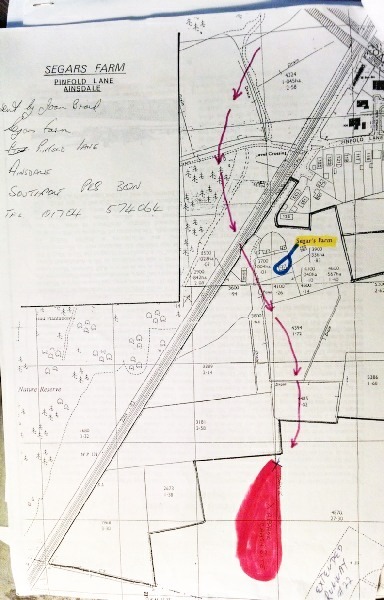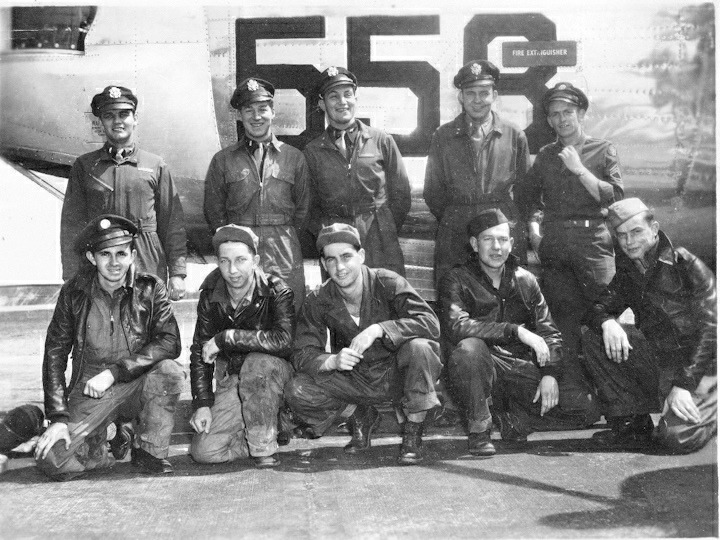An RAF Woodvale Memorial Needed ?
Reg Yorke – 26th October 2014
It was just after 12 noon on Saturday 25th of October that Tony Bonney and I arrived at Segar’s farm just off the coast road at Ainsdale to meet Mrs Joan Braid, now in her 80s, brought up on the farm and still living there, the only surviving witness to the disastrous B 24 Liberator crash which occurred on a misty day as she came home from school for lunch exactly 70 years ago.
Before going out onto the now uncultivated fields on the periphery of the old farmstead we looked at her scrapbook of newspaper cuttings and communications from American relatives of the seven American airmen who lost their lives that day returning for a period of rest and recuperation. They were all on their way home after flying together a total of more than 370 missions,
After a chat we made our way to the fence now separating the farm from the airfield, now grown wild and rough, though the farmland, though rather poor and sandy, had once been productive until taken over by the RAF for the creation of the airfield at the beginning of World War II. With previous permission from the RAF we negotiated the barbed wire and made our way through hummocky overgrown grassland to the exact site of the crash. Mrs Braid was able to describe as a ten year old on this day at 12.50 pm exactly seventy years ago, seeing an American B24 Liberator approaching at a low level from the north-west in the direction of the control tower, but not landing immediately; circling round out to sea and then making a 2nd approach. Unfortunately still on a slightly incorrect course, making a rapid correction the plane banked, when its starboard wing hit a field boundary (cop), causing the plane to cartwheel, crash and catch fire. Twenty veterans of the 446 Bomber group were immediately killed or badly wounded.
The incident seems to have been covered up by the US military for a long time and it was only 17 years ago that the relevant documents were declassified. It is now considered that this was arguably the most tragic non-combat related accident of the 8th Air Force during the war. Our informal visit today when we left a few flowers and a small wooden cross, appears to have been the first ‘memorial’ visit ever to take place to the original crash site, pin-pointed by Mrs Braid and described by Aldon Ferguson in his excellent book on Royal Air Force, Woodvale the First Fifty Years published by Airfield Publications, 1991.
With the approach of November 11th, it occurs to us that it would be appropriate for there to be some sort of simple memorial erected to the many RAF personnel, stationed at Woodvale, who lost their lives with the RAF during WW2. Few of the present-day Formby population, most of whom will have moved to live here since WW2, have much idea of the role Woodvale played. The now established Dune Heath, formerly part of the airfield, would perhaps be one possible place (insofar as it is now open to the public), for a suitable simple Memorial. Another would be the (to be re-designed?) main airfield entrance. Aldon Ferguson, describes how over 24 airmen lost their lives one way or another. Only 2 or 3 graves are to be found in Formby itself. The similar Burscough wartime aerodrome, no longer used, does however have a similar Memorial at its former main gate. Before taking it any further we are seeking views of people like Aldon and of course RAF Woodvale. If the idea has their support we would like to give it our further consideration . What do you think?


